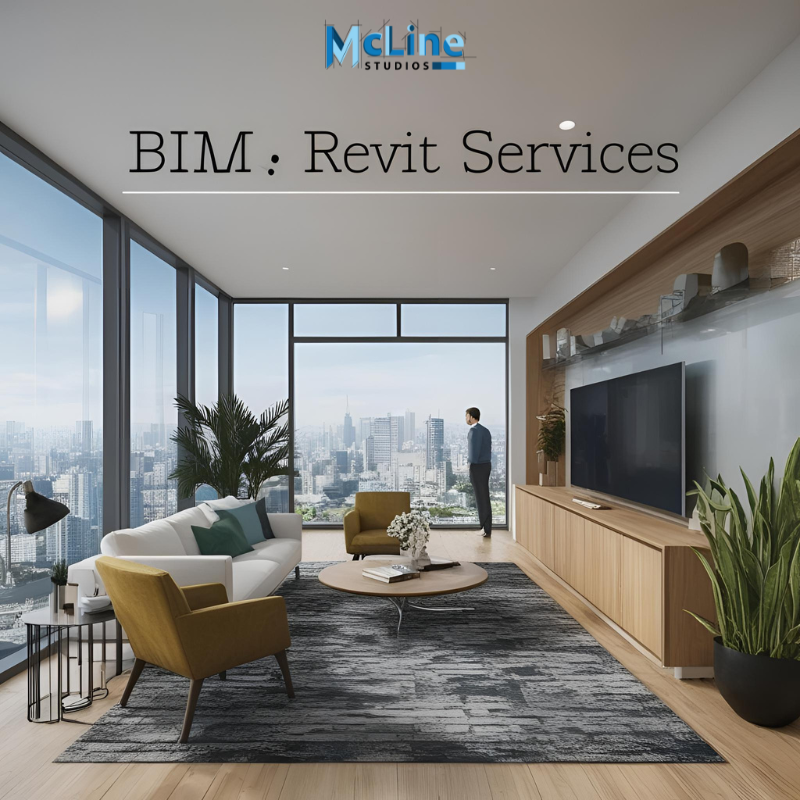As the demand for environmentally conscious construction practices continues to grow, Building Information Modeling (BIM) particularly through platforms like Autodesk Revit is proving to be a game-changer in sustainable building design.
No longer just a tool for visualization and coordination, BIM has evolved into a strategic asset that helps architects, engineers, and builders design greener, more efficient structures from the ground up.
With its ability to simulate energy performance, reduce material waste, and support lifecycle analysis, Revit-based BIM services are at the forefront of driving sustainability in the built environment.
This blog explores how the future of BIM Revit services is shaping a smarter, more sustainable construction industry.
Understanding BIM and Revit in Context
Building Information Modeling (BIM) is a smart way to design and manage buildings. It uses digital models to show how a building will look and work before it is built. These models are rich in data and include information about materials, dimensions, costs, time, and more. BIM helps architects, engineers, and contractors work together better, saving time and reducing mistakes.
Revit is one of the most popular software tools used for BIM. Created by Autodesk, Revit allows users to create 3D models of buildings. It is different from older 2D drafting tools like AutoCAD because Revit is more than just drawings it creates a full digital version of a building. As changes are made in the design, Revit updates all related views and details automatically, making the process faster and more accurate.
Together, BIM and Revit improve communication between different people working on a project. For example, if an architect changes a wall design, Revit updates the plans, sections, and 3D views instantly. This helps engineers and builders see the change in real-time and plan their work accordingly.
The Rising Need for Sustainable Building Design
Today, more people are talking about climate change and how it affects our planet. One way to help the environment is through sustainable building design. This means creating buildings that use less energy, water, and natural resources. These buildings are better for the planet and also for the people who live or work in them.
Sustainable buildings are designed to last longer and use smart systems. For example, they may use solar panels to get energy from the sun or collect rainwater to reduce water waste. Good insulation and natural lighting help lower electricity use. These features not only save money but also reduce pollution.
There is a growing demand for green buildings in homes, offices, and public places. Governments are also making rules that support eco-friendly construction. Many people now prefer buildings that are healthier, cleaner, and cost less to run.Cloud-based BIM tools let teams from around the world work together on one model.
Sustainable design also means using local and recycled materials. This cuts down the need to ship materials from far away, which helps lower carbon emissions. Architects and engineers are learning new ways to design buildings that blend with nature and protect it.
Current Contributions of BIM Revit to Sustainability
Building Information Modeling (BIM) with Revit is playing a big role in making construction and architecture more sustainable. Revit helps architects, engineers, and builders plan and design buildings more efficiently, saving time, materials, and energy.
One of the main ways Revit supports sustainability is by helping teams design energy-efficient buildings. With Revit, users can analyze sunlight, shading, and building orientation. This helps in deciding the best position for windows, insulation, and solar panels. It can also predict how much energy a building will use, allowing changes to be made early in the design process.
Revit also reduces material waste. It gives accurate quantities of materials needed for construction. This means less extra material is ordered, which lowers both cost and waste. It also helps in selecting eco-friendly materials and tracking their use throughout the project.
Another key benefit is collaboration. BIM Revit allows multiple team members to work on the same model. This reduces errors, rework, and delays. Fewer mistakes mean less waste and better use of resources.
Additionally, Revit supports renovation and reuse of existing buildings. Instead of building from scratch, old structures can be upgraded to be more energy-efficient using BIM Revit’s modeling tools.
Emerging Trends and Innovations in BIM Revit for Sustainability
Building Information Modeling (BIM) using Revit is becoming a key tool in creating eco-friendly and sustainable buildings. Today, many new trends and features in BIM Revit are helping architects and designers reduce waste, save energy, and plan better buildings for the environment.
One big trend is the use of energy analysis tools within Revit. These tools help check how much energy a building will use before it is even built. Designers can test different materials, layouts, and systems to choose the most energy-efficient options.
Another innovation is integration with green building certifications, like LEED. Revit makes it easier to track and document the steps needed to meet green standards. This saves time and ensures nothing is missed in the design process.
Smart material libraries are also improving. Revit now includes more eco-friendly material options, with data about their impact on the environment. This helps teams make better choices right from the start.
Collaboration is getting better, too. Cloud-based BIM tools let teams from around the world work together on one model. This reduces mistakes and travel, both of which support a greener process.
The End Note
The future of BIM Revit services is deeply connected to the evolution of sustainable building design. As the construction industry moves toward greener practices, Revit’s powerful features like energy simulation, material optimization, and collaborative cloud tools are becoming essential for designing efficient, eco-friendly buildings.
BIM is no longer just about visualization; it’s a smart, data-driven approach that helps teams make better decisions from start to finish.
With continued innovation and growing global demand for sustainability, BIM Revit services are set to play an even bigger role in shaping a cleaner, smarter, and more responsible built environment. Embracing these technologies today is a key step toward building a better tomorrow.




